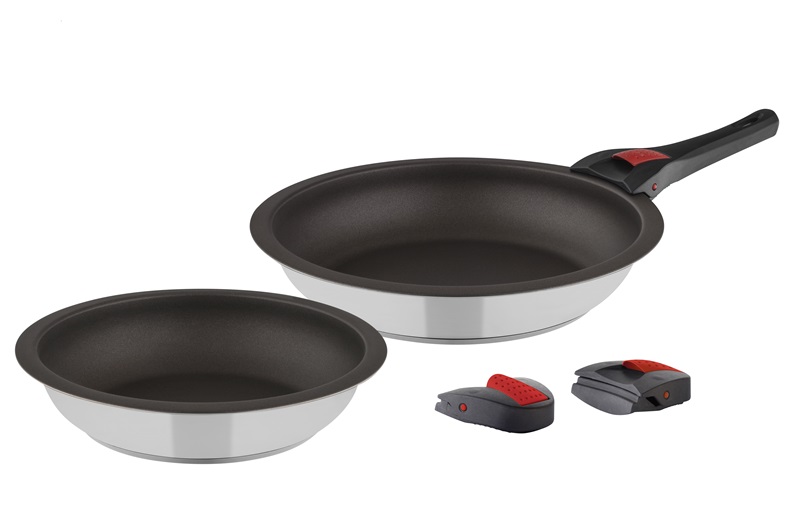Material knowledge
All about material
What does 18/10 stainless steel mean?
What is the difference between 18/0 and 18/10 stainless steel?
And what is 13/0 stainless steel? What are the different knife steels all about?
We've got the lowdown and the most important facts for you!
CUTLERY MATERIALS
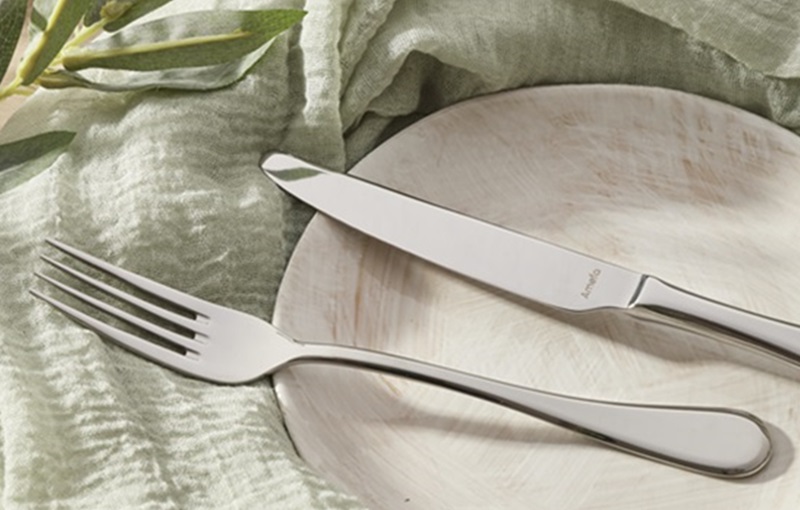

What does 18/10 stainless steel mean?
18/10 stainless steel means that the steel composition is enriched with 18% chromium and 10% nickel. The high chromium content provides protection against rust formation and corrosion. The high nickel content helps to stabilise the passivation layer of the steel, making it even more resistant to environmental influences.
18/10 stainless steel can be slightly harder and have a shinier finish due to the higher nickel content. Nickel improves the hardness and gives the steel a mirror-like lustre.
What does 18/0 stainless steel mean?
This stainless steel contains 18% chromium, the "0" means that there is no nickel in the alloy. This is particularly important for people who may be sensitive or allergic to nickel. Compared to 18/10 stainless steel, 18/0 stainless steel can be slightly softer and may look less shiny.
18/0 stainless steel is also magnetic, making it particularly popular in communal catering and system catering (magnetic clearing systems).
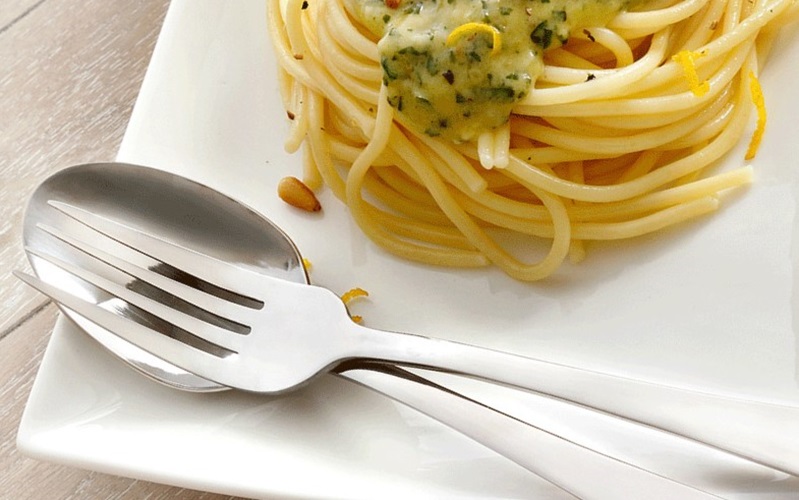

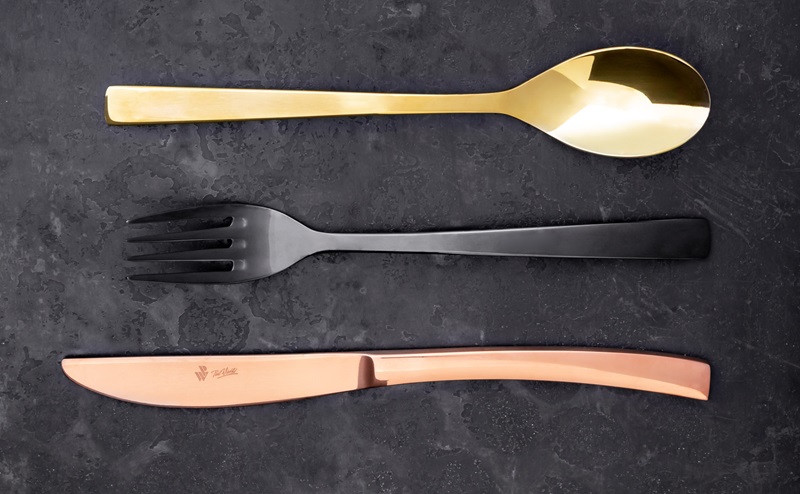

Coloured cutlery with PVD finish
PVD stands for "Physical Vapour Deposition", which is a special vacuum-based finishing process in which metal particles are applied to the stainless steel cutlery by means of vaporisation. This gives the cutlery a special colour sheen, such as black, gold, champagne and copper.
PVD coatings look particularly attractive, feel good to the touch and are durable, harmless to health and dishwasher-safe.
Silver-plated cutlery
In the past, silverware was reserved for aristocrats and well-heeled families. Even today, silver cutlery is still something special: the precious metal enchants with its white lustre.
The material has the properties of being particularly thermally conductive and antiseptic. The silver-plated cutlery at bestecke.de is provided with a silver plating of 100g. The finish is applied by dipping and is an additional layer on the cutlery items.
Here we show you how to keep your silver cutlery in top condition at home.


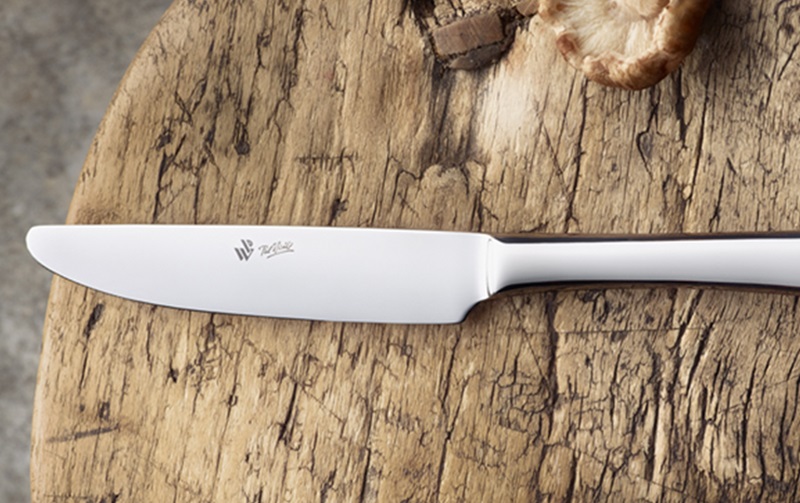

What is stainless steel 13/0
13/0 means that the steel contains 13% chromium and no nickel. This means that this steel can be hardened and sharpened.
13/0 stainless steel is therefore also known as blade steel and is generally used for the blades of table knives. This ensures that the blade remains sharp for a particularly long time and that the knives cut well and last a long time.
If discolouration occurs after rinsing, it can be removed quickly and easily. You can read more about this here.
The difference between monobloc and hollow-handled knives?
In a monobloc knife, the blade and handle are made from one piece and from the same material. This means that the blade and handle are made of 13/0 stainless steel (see also 13/0 stainless steel cutlery blades).
With the hollow-handled knife, on the other hand, the blade and handle are made separately. This means that the blade and handle are made from two different materials, which are then welded together, usually the blades are made from 13/0 and the handle from 18/0 or 18/10 stainless steel. As the name suggests, the hollow-handled knife has a hollow handle. This makes it pleasantly light in the hand.
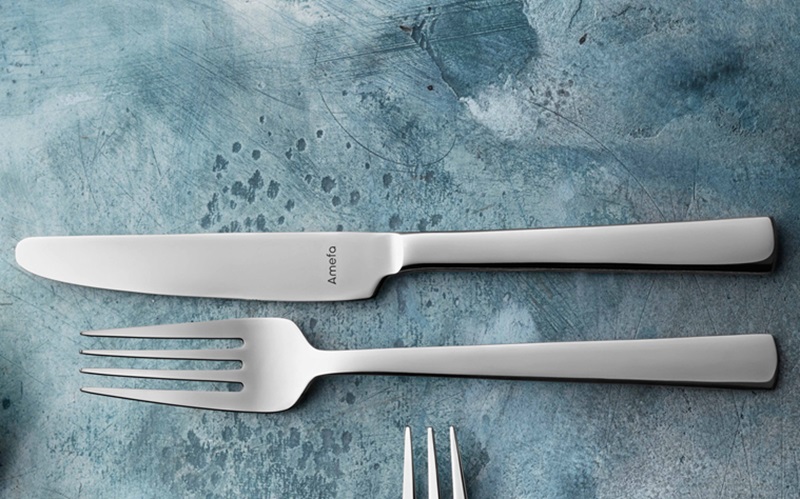

KNIFEBLADE MATERIALS
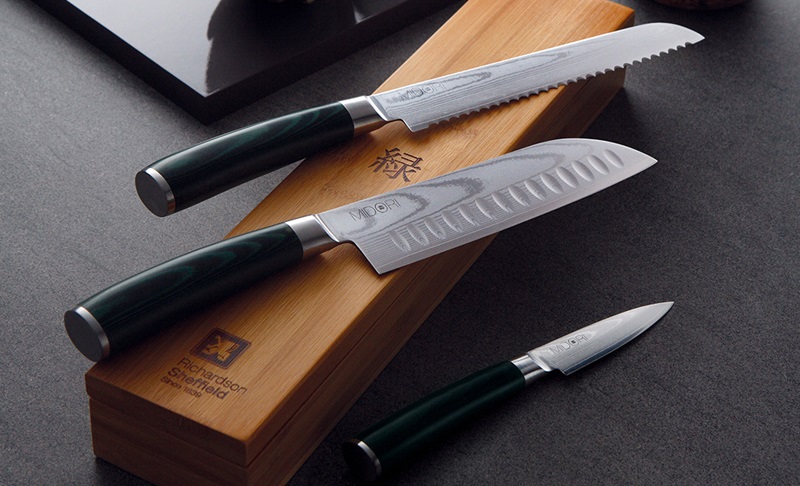

Damascus steel
Ceramic knives are extremely sharp and stay sharp for a particularly long time, but unfortunately the blades break very easily. Cerasteel combines the sharpness of ceramic with the breaking strength of steel.
Cerasteel has a laser-welded high-tech ceramic blade, which gives the knife its extreme sharpness and durability. The steel, on the other hand, makes the blade flexible and elastic and ensures that the blade does not break or pieces break out of it. This combination of materials offers the ideal conditions for all cutting work in the kitchen.
Cerasteel
Ceramic knives are extremely sharp and stay sharp for a particularly long time, but unfortunately the blades break very easily. Cerasteel combines the sharpness of ceramic with the breaking strength of steel.
Cerasteel has a laser-welded high-tech ceramic blade, which gives the knife its extreme sharpness and durability. The steel, on the other hand, makes the blade flexible and elastic and ensures that the blade does not break or pieces break out of it. This combination of materials offers the ideal conditions for all cutting work in the kitchen.
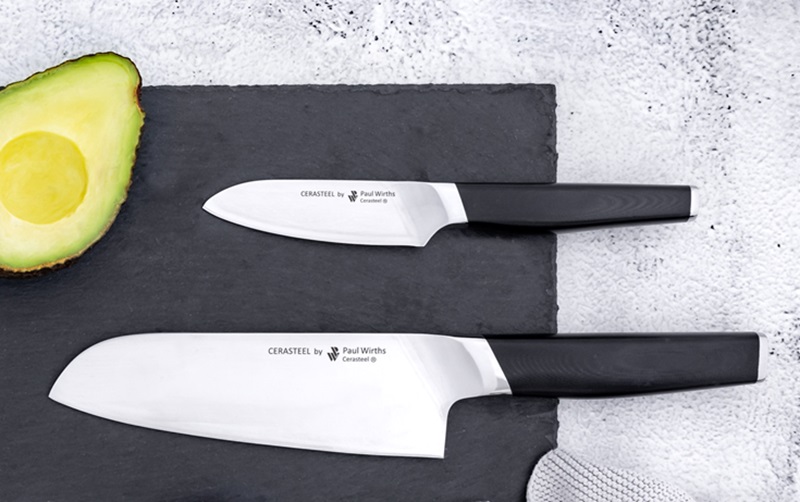

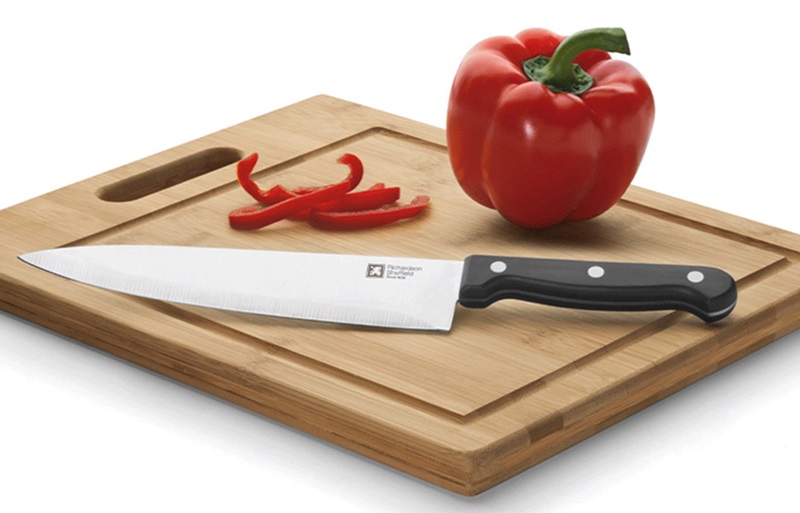

Chrome vanadium steel (3Cr14)
As knives made from chrome steel are only partially rustproof, additional alloying elements are added to the steel to protect it from acids and rust. This is achieved by adding vanadium, for example. This alloying element is stable against acids and bases due to its thin oxide layer.
The steel is more resistant to acids and rust. In addition, a higher hardness can be achieved without the blades becoming brittle and breaking quickly. The higher the degree of hardness, the longer it takes before the blades need to be resharpened.
Chrome-molybdenum-vanadium steel (50CrMoV15)
Alongside vanadium, molybdenum is another alloying element that increases resistance to acid and rust. Higher degrees of hardness can be achieved in production - this makes the knife blades robust and edge-holding. They therefore need to be resharpened less frequently.
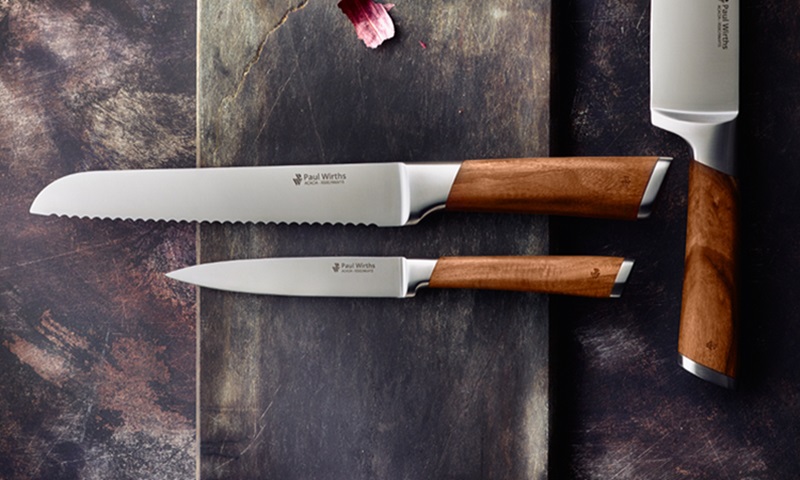

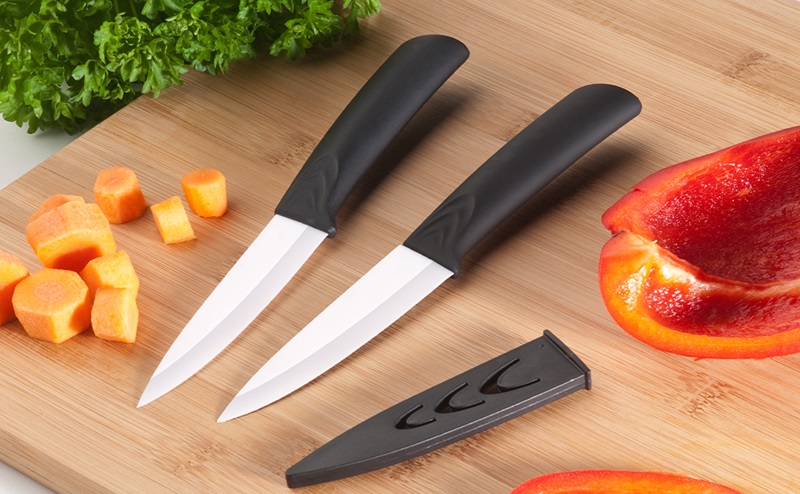

Ceramic blade
Rust? Not a chance. This is not an issue for blades made of KEramik, as this material is absolutely resistant to food acids and dishwasher detergents.
With a hardness of around 70 HCR, the blades remain sharp for a very long time and only need to be sharpened very rarely. In this case, however, very hard also means inelastic - so the ceramic blade can break easily.
POT MATERIALS (Quick Clack Pro)
Pots
The thermo-sandwich base is made of 0.5 mm stainless steel and a 5 mm thick aluminium core, which is hammered onto the base of the pot under high pressure without pores. It conducts heat very well so that the pot is quickly warm and ready for use.
Pans
A high-quality, multi-layer Whitford Eterna coating is used for the coated pans in the Quick Clack Pro range, which is very robust and has very good non-stick properties.
